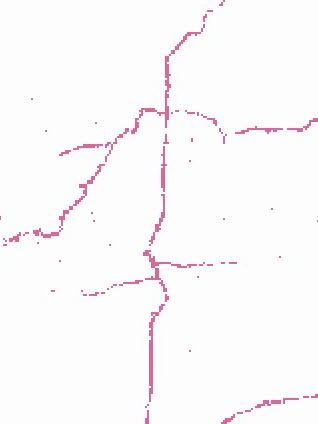
Example of new logging road in the Peruvian Amazon. Data: Planet
We propose a new tool to address illegal logging in the Peruvian Amazon: using cutting-edge satellites to monitor logging road construction in near real-time.
Illegal logging in the Amazon is difficult to detect because it is selective logging of individual valuable trees, not large clear-cuts.
However, a new generation of satellites can quickly detect new logging roads, which in turn may indicate the leading edge of illegal logging.
Here, we analyzed satellite imagery to identify all new logging roads built in the Peruvian Amazon over the past three years (2015-17).
We then show how it is possible to track logging road construction in near-real time, using three satellite-based systems: GLAD alerts, Sentinel-1 (radar satellites), and Planet (optical satellites).
The Technology

GLAD alerts. Source: GFW
GLAD alerts quickly detect areas of recent forest loss (based on 30 meter resolution Landsat imagery) and highlight those pixels. For example, the image on the right shows GLAD alerts for a recent logging road. The satellites described below can then zoom in on these highlighted areas and continue the monitoring in near real-time.
The European Space Agency’s Sentinel-1 satellites freely offer a new image every 12 days no matter the weather conditions, as radar technology allows it to penetrate clouds (see MAAP #79).
The company Planet has a fleet of 175+ mini satellites, lined up like pearls in a necklace, that are able to capture a high-resolution optical image almost daily, though clouds remain an issue (see MAAP #59).
Key Findings

Base Map. Logging roads in the Peruvian Amazon. Data: MAAP, SERNANP, IBC. Click to enlarge.
The Base Map illustrates the location of all logging roads built in the Peruvian Amazon since 2001.
We estimate the construction of 1,365 miles (2,200 km) of logging roads during the last three years (2015-17). We indicate these roads in red.
Note that the roads are concentrated in three zones:
- Southern Loreto, between Cordillera Azul and Sierra del Divisor National Parks;
- Southern Ucayali; and
- Northeast Madre de Dios.
Another important finding is the potential rapid speed of logging road construction: up to 1.5 miles (2.5 km) per week.
Next, we focus on two emblematic logging roads (near Sierra del Divisor and Cordillera Azul National Parks, respectively) to demonstrate the feasibility of near real-time monitoring based on Sentinel-1 and Planet satellites.
A. Logging Road near Sierra del Divisor
Image A1 is a GIF that shows a series of radar images (Sentinel-1) of the construction of a logging road between 2015 and 2017 just north of Sierra del Divisor National Park. The length of the road is 43 miles (69 km). Image A2 is a Planet image showing the status of the road as of the end of 2017.

Image A1. Construction of logging road near Sierra del Divisor. Data: ESA

Image A2. Logging road near Sierra del Divisor. Data: Planet
B. Logging Road near Cordillera Azul
Image B1 is a GIF that shows a series of radar images (Sentinel-1) of the construction of a logging road between 2015 and 2017 east of Cordillera Azu National Park. The length of the road is 33 miles (53 km). Image B2 is a Planet image showing the status of the road as of the end of 2017.

Image B1. Construction of logging road near Cordillera Azul. Data: ESA

Image B2. Logging road near Cordillera Azul. Data: Planet
Notes
1 Not all illegal logging requires roads, but logging roads may indicate some of the most organized, financed, and large-scale operations.
Coordinates
Zona A: -6.966982,-74.6521
Zona B: -7.650428,-75.552979
Citation
Villa L, Finer M (2018) Illegal Logging in the Peruvian Amazon, and how Satellites can help. MAAP: 85.
 We present our third report* in a series investigating deforestation hotspots in the Colombian Amazon. Here, we focus on the “Chiribiquete-Macarena” hotspot, located between the Chiribiquete and La Macarena National Parks.
We present our third report* in a series investigating deforestation hotspots in the Colombian Amazon. Here, we focus on the “Chiribiquete-Macarena” hotspot, located between the Chiribiquete and La Macarena National Parks.




























